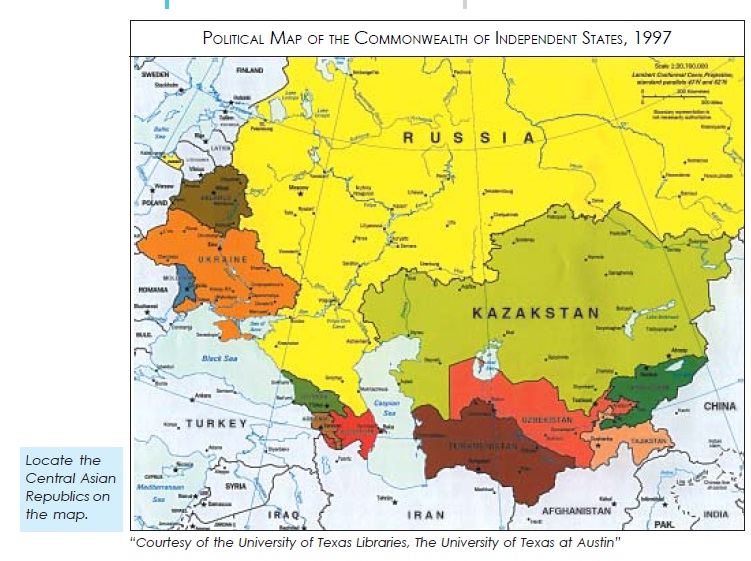#Fight with Covid_19
Soviet System
- The Union of Soviet Socialist Republics (USSR) came into being after the Socialist Revolution in Russia in 1917. The revolution was inspired by the ideals of socialism and the need for an egalitarian society as opposed to capitalism.
- After the Second World War, the East European countries that the Soviet army had liberated from the fascist forces came under the control of the USSR.
- There was change in the economic and political system of the USSR. Then the Soviet economy became more developed than the rest of the world except the US.
- However, the Soviet system became very bureaucratic and authoritarian. It made life very difficult for its citizens.
- In the arms race, the Soviet Union managed to match the US from time to time, but at great cost.
Gorbachev and the Disintegration of the USSR
- Mikhail Gorbachev, who had become General Secretary of the Communist Party of the Soviet Union in 1985, sought to reform the system. He introduced economic and political reform policies of perestroika (restructuring) and glasnost (openness). But later his policies were criticised.
- A coup took place in 1991 that was encouraged by Communist Party hardliners. The people did not want the old-style rule of the Communist Party and wanted freedom.
- Russia, Ukraine and Belarus, the three major republics of the USSR, declared in December 1991 that the Soviet Union was disintegrated.;
- Capitalism and democracy were adopted as the basis for the post Soviet republics.
Reasons for the Soviet Union Disintegration
There are several reasons which led to the collapse of the Soviet Union. These were
- Internal weaknesses of Soviet political and economic institutions failed to meet the aspirations of the people.
- The economy of the Soviet Union became stagnant. The Soviet economy used much of its resources in maintaining a nuclear and military arsenal.
The Soviet Union too became stagnant due to rampant corruption, the unwillingness to allow more openness in government, and the centralisation of authority in a vast land. - A section of the society was not happy with the reforms of Gorbachev. It was believed that the reforms introduced by Gorbachev were at a very slow pace.
- Another reason for the collapse of USSR was the rise of nationalism and the desire for sovereignty within various republics including Russia and the Baltic republics.
Advertisement

Consequences of Disintegration
There are many consequences of the disintegration of USSR. They are as follows:
- It led to the end of Cold War confrontations. There was no dispute of Socialist ideology and Capitalist ideology.
- Power relations in world politics changed and thus it led to change in the relative influence of ideas and institutions.
- The US became the sole superpower which also backed the capitalist economy making it the dominant economic system internationally.
- The end of the Soviet bloc paved way for the emergence of many new countries. All these countries had their own independent aspirations and choices.
- The international system saw many new players’ emerge, each with its own identity, interests and economic and political difficulties.
Consequences of Shock Therapy
- The shock therapy brought ruin to the economies and disaster upon the people of the entire region.
- The value of the Russian currency ‘Ruble’ declined dramatically. People lost all their savings due to high rate of inflation.
- The government withdrew subsidies which pushed large sections of the people into poverty. The middle classes were pushed to the periphery of society.
- The construction of democratic institutions was not given the same attention and priority as the demands of economic transformation.
- Most of these economies, especially Russia, started reviving in 2000, 10 years after their independence. The reason for the revival was the export of natural resources like oil, natural gas and minerals.
Tensions and Conflicts in Former Soviet Republics
- There were tensions and conflicts in most of the former Soviet republics and many have had civil wars and insurgencies.
- In Russia, two republics, Chechnya and Dagestan have had violent secessionist movements.
- Tajikistan witnessed a civil war for almost 10 years till 2001. The region had many sectarian conflicts.
- Central Asia too become a zone of competition between outside powers and oil companies.
- Czechoslovakia was divided into two, the Czechs and the Slovaks thus forming independent countries.
- Yugoslavia broke apart with several provinces like Croatia, Slovenia and Bosnia and Herzegovina declaring independence.
Advertisement
India and Post-Communist Countries
- India maintained a cordial relationship with all the post-communist countries. The strongest relation of India is still with Russia.
- Indo-Russian relation is an important aspect of India’s foreign policy. Both the countries share a vision of a multipolar world order.
- India got benefits from Russia over issues like Kashmir, energy supplies, access to Central Asia, balancing its relations with China.
- Russia stands to benefit from this relationship because India is the second largest arms market for Russia. Both the countries have collaborated over many scientific projects.